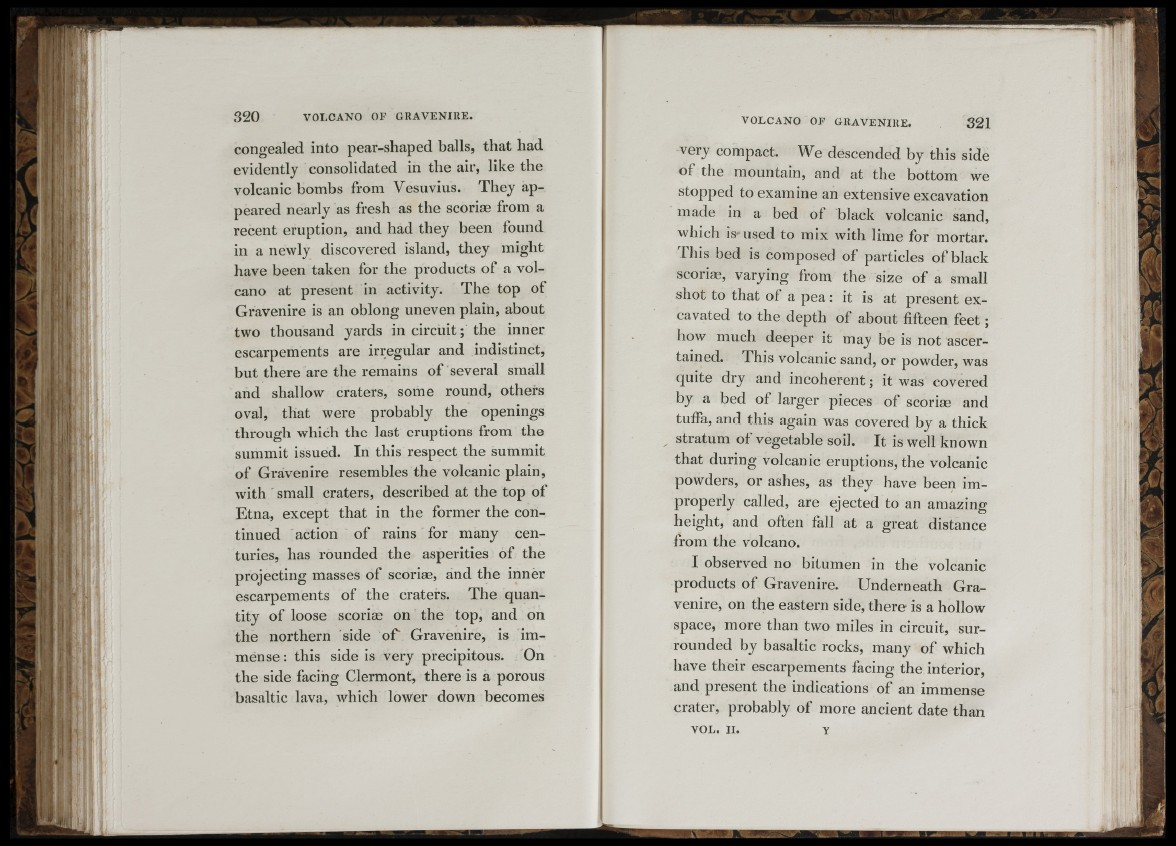
iFli!
m
ïiî ; F; i
a i
congealed into pear-shaped balls, that had
evidently consolidated in the air, like the
volcanic bombs from Vesuvius. They appeared
nearly as fresh as the scoriæ from a
recent eruption, and had they been found
in a newly discovered island, they might
have been taken for the products of a volcano
at present in activity. The top of
Gravenire is an oblong uneven plain, about
two thousand yards in circuit ; the inner
escarpements are irregular and indistinct,
but there are the remains o f several small
and shallow craters, some round, others
oval, that were probably the openings
through which the last eruptions from the
summit issued. In this respect the summit
of Gravenire resembles the volcanic plain,
with small craters, described at the top of
Etna, except that in the former the continued
action of rains for many centuries,
has rounded the asperities of the
projecting masses of scoriæ, and the inner
escarpements of the craters. The quantity
of loose scoriæ on the top, and on
the northern side o f Gravenire, is immense
: this side is very precipitous. On
the side facing Clermont, there is a porous
basaltic lava, which lower down becomes
very compact. We descended by this side
o f the mountain, and at the bottom we
stopped to examine an extensive excavation
made in a bed of black volcanic sand,
which is-^used to mix with lime for mortar.
This bed is composed of particles of black
scoriæ, varying from the size o f a small
shot to that o f a pea : it is at present excavated
to the depth of about fifteen feet ;
how much deeper it may be is not ascertained.
This volcanic sand, or powder, was
quite dry and incoherent ; it was covered
by a bed o f larger pieces of scoriæ and
tuffa, and this again was covered by a thick
stratum of vegetable soil. It is well known
that during volcanic eruptions, the volcanic
powders, or ashes, as they have been improperly
called, are ejected to an amazing
height, and often fall at a great distance
from the volcano.
I observed no bitumen in the volcanic
products o f Gravenire. Underneath Gravenire,
on the eastern side, th e re is a hollow
space, more than two miles in circuit, surrounded
by basaltic rocks, many of which
have their escarpements facing the interior,
and present the indications of an immense
crater, probably of more ancient date than
V O L . I I . Y
I .. 1
t
F